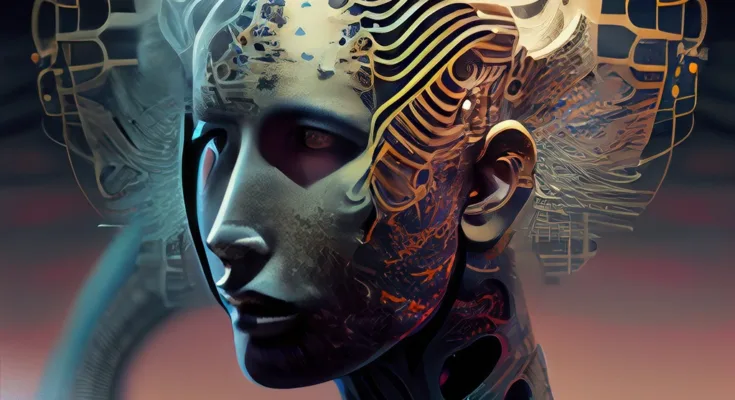What is Generative AI?
Generative AI is a type of artificial intelligence (AI) that can create new content, such as text, images, or music. It does this by learning from existing data and then using that knowledge to generate new outputs. Generative AI is still in its early stages of development, but it has the potential to revolutionize many industries, including healthcare, marketing, and entertainment.
How Does Generative AI Work?
Generative AI works by using machine learning algorithms to identify patterns in existing data. Once the algorithm has identified these patterns, it can use them to generate new data that is similar to the existing data. For example, a generative AI algorithm that has been trained on a dataset of images of cats could be used to generate new images of cats.
There are two main types of generative AI:
- Generative adversarial networks (GANs): GANs are a type of machine learning algorithm that pits two neural networks against each other. One neural network, the generator, is responsible for creating new data. The other neural network, the discriminator, is responsible for distinguishing between real data and generated data. The two networks compete against each other, and over time, the generator becomes better at creating realistic data that can fool the discriminator.
- Variational autoencoders (VAEs): VAEs are a type of machine learning algorithm that uses a neural network to encode existing data into a latent space. The latent space is a lower-dimensional space that captures the essential features of the data. The VAE can then use the latent space to generate new data that is similar to the original data.
Applications of Generative AI
Generative AI has a wide range of potential applications, including:
- Generating realistic images: Generative AI can be used to generate realistic images of people, animals, objects, and scenes. This could be used to create new forms of art, design, and entertainment.
- Generating text: Generative AI can be used to generate text, such as news articles, blog posts, and poems. This could be used to create new forms of content and to personalize the user experience.
- Generating music: Generative AI can be used to generate music, such as songs, soundtracks, and melodies. This could be used to create new forms of music and to personalize the listening experience.
- Drug discovery: Generative AI can be used to design new drugs and to identify potential targets for drug development. This could revolutionize the pharmaceutical industry and lead to new treatments for diseases.
- Fraud detection: Generative AI can be used to detect fraudulent activities, such as credit card fraud and insurance fraud. This could help to protect businesses and individuals from financial loss.
- Personalization: Generative AI can be used to personalize the user experience, such as by recommending products or services that are likely to be of interest to the user. This could improve the customer experience and increase sales.
The Future of Generative AI
Generative AI is a rapidly developing field, and its potential applications are vast. As technology continues to improve, we can expect to see generative AI being used in even more ways to improve our lives.
Conclusion
Generative AI is a powerful new technology that has the potential to revolutionize many industries. It is still in its early stages of development, but it has already made significant progress. As technology continues to improve, we can expect to see generative AI being used in even more ways to improve our lives.











